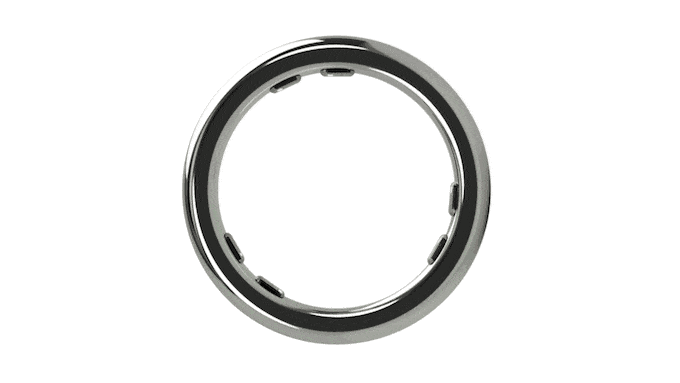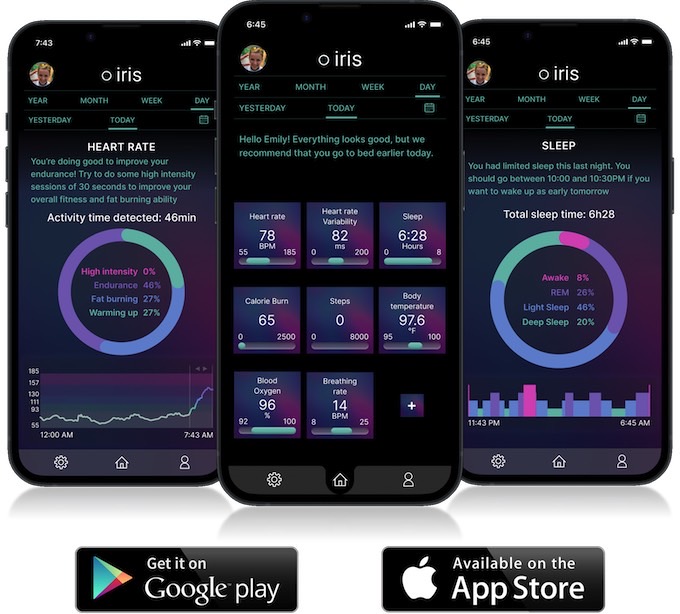I Just Bought A Smart Ring That Will Measure My Blood Pressure, And I Hope It's Not A Scam
I use the Apple Watch for health and fitness tracking purposes, especially with my newfound passion for running, which made me turn to ChatGPT for better running shoe recommendations. I had particular conditions for the running shoes I wanted, with an emphasis on comfort and protection against certain injuries.
The reason I mention running is simple: I have high expectations for the Apple Watch of the future handling my health data during those runs as well as regular activities. The device will hopefully measure blood sugar and blood pressure on top of everything else. Until then, I plan to use the brand new Iris smart ring, a crowdfunded wearable device from Switzerland that claims to measure blood pressure.
The feature won't be available immediately, and I'll have to wait until December to get the wearable. An update will then enable the feature in the second quarter of 2024. All the while, I'm thinking this sounds too good to be true, and I hope it's not a scam.
I missed the Kickstarter campaign for the Iris smart ring, which concluded a few weeks ago. Assim & Nino, the two Swiss scientists behind this wearable innovation, raised over 622,000 CHF ($687,000) during the crowdfunding period. The device is now available for preorder on Indiegogo, nearing $935,000 in total funding. The figure includes the Kickstarter pledges.
The cheapest Iris ring costs about $200, slightly more expensive than the Kickstarter campaign. That's the price you'll pay for the Black edition option when and if the device becomes widely available. Iris ring versions with metal finishes will cost around $230 if you preorder one now.
The Indiegogo campaign includes a lifetime subscription to the software that will power the smart ring, which is a great perk. The software will cost $10/month. Finally, you'll be able to return the device within 14 days after getting it. Again, assuming the product does ship.
Considering the various negative experiences that crowdfunding campaigns have delivered over the years, I have to consider the possibility that the Iris will face challenges.
Still, the product intrigues me, particularly because it promises to deliver blood pressure readings via a future software update. Other wearables can do it, but not smart rings. Then again, we have smart rings capable of monitoring health parameters, like the Oura.
The researchers behind the Iris propose a smart ring even smaller than the competition. But the Iris reportedly features a constellation of sensors that will let it measure several health parameters.

Since I'm aging, I'm interested in continuous blood pressure monitoring. And I can't wait for the Apple Watch to offer it. The more data I collect, the faster I'd catch signs of heart issues. And I'd like to collect that data well before heart conditions set in. The Iris ring might help me with that, assuming everything works.
And yes, some Galaxy Watch devices measure blood pressure, but I'm not looking to switch from the Apple Watch. The Iris should complement the Apple Watch.
The ring should also measure heart rate and blood oxygen, features that are available from premium Apple Watch models. There's also sleep and stress monitoring. And the Iris should take your temperature.
As expected, the wearable will feed that health data to a mobile app on the iPhone or Android.

The Iris uses a technology called photoplethysmography (PPG) to measure health parameters, including blood pressure. Like Galaxy Watch models. The fact that tech to measure blood pressure with wearable devices exists also works in favor of the Iris. The smart ring will hopefully work just as well as a smartwatch.
I will note that Assim & Nino do mention a US patent awarded for some of the tech they use inside the Iris watch. Sure enough, you can find that patent at this link. A video from the Iris creators explaining the tech follows below.
All I need to do now is wait for the Iris smart ring to ship. Hopefully, the creators will make that December 2023 deadline.
